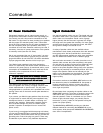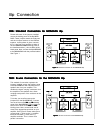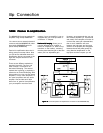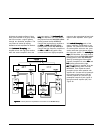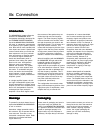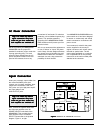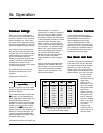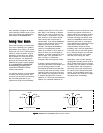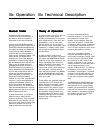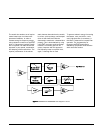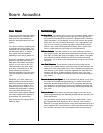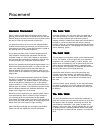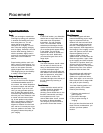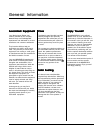
Page16
Monolith III User's Manual
Musical TastesMusical Tastes
Musical TastesMusical Tastes
Musical Tastes
An added benefit of the contour
controls on the IIIx CROSSOVER, is
the ability to adjust your speaker's
personality to your style of listening.
It is well known that an “audiophile”
listening priority is different from that of
“rock” or “classic European” listening
orientation. By setting your frequency
control to 30 Hz and the boost/cut
control to 0dB, you will have what is
known as the "Audiophile setting". This
setting allows the deepest bass
extension and most linear theoretic
performance. Experimenting slightly
with the boost/cut control will give you
either a drier or deeper and more
extended performance. However, if a
“rock” orientation is your preference,
set the frequency control between 40
to 50 Hz with a slight boost, and you
will get more of the emphasized
percussive effect of rock music. The
last priority, “classic European”,
consists of a dry, clean, very tight bass
structure. It can be accomplished by
resetting the frequency control to 30
Hz and turning down the boost/cut
control. At this point, you will still have
deep and extended bass, but it will be
slightly rolled off to give you a very tight,
defined performance level.
In the final evaluation, your ears will
determine where these controls
should be positioned. They have been
established for your flexibility and use
and can be used much like an accurate
bass/room equalizer. So don't be
afraid to experiment and have fun!
IIIx Operation
IIIx Technical Description
Theory of OperationTheory of Operation
Theory of OperationTheory of Operation
Theory of Operation
The audio signal coming from the pre-
amplifier of your audio system is
typically representitive of a low imped-
ance voltage source. There are a few
preamplifiers, such as older tube
designs, which may not conform to
this, as they have a much higher output
impedance. In addition many cables
can change the preamplifiers output
characteristics.
In order to assure a high level of
performance with all types of preamps
and cables, the MONOLITH IIIx CROSS-
OVER has a high input impedance, low
output impedance buffer for its first
stage. Futhermore, since there is no
substitute for isolation to prevent
various filter sections from interacting
with each other (normally the high
pass and low pass filters), the MONO-
LITH IIIx CROSSOVER has a separate
buffer for the high-pass and the low-
pass audio path.
These buffers are designed using two
complimentary J-FET devices per
buffer, strapped in unity gain, voltage
follower topology. Two additional
bipolar devices are used as current
sources only, enabling the J-FETs to
be completely current biased. This
complimentary J-FET buffer is used
repeatedly throughout the crossover,
except for the output stage which
requires gain.
In being a dedicated electronic
crossover/equalizer, it is vital to tailor
the system to the needs of the
speaker. Planar speakers have two
main areas of concern: 1) Rear wave
cancellation, which causes a decrease
in the speaker’s output below 500 Hz,
and 2) Primary resonance, which is the
frequency the speaker is tuned to.
Rear wave cancellation requires
corrective equalization beginning at
500 Hz and increasing to roughly 12dB
at 100 Hz. Primary resonance affects
this response as well, because the
speaker is effectively out of control at
primary resonance. A notch filter works
well to negate the effects of this
typically 12dB resonance. The decision
of resonance tuning and rear wave
cancellation compensation, combined
in balance with the high frequency roll-
off point, is a system decision based
on the sonic properties of the speaker
itself.
The MONOLITH IIIx CROSSOVER's high-
pass pathway utilizes three separate
filter sections; one for raising energy
between 100 Hz and 500 Hz, empha-
sizing 100 Hz (referred to as a shelving
filter), another for decreasing energy at
the speaker resonance (notch filter)
and a third high-pass filter.



